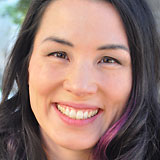
Recently, people have asked me, “Why isn’t talking about white privilege enough, why white supremacy?” There is an obvious discomfort with the term by white people. The one exception to that is when things like Charlottesville happen. When people march around with Nazi flags, most folks I know feel comfortable saying, “I’m not down with that.” Which is a pretty low bar, but OK. However, when the term white supremacy is used for anything less obvious than tiki torch-wielding, Nazi flag-waving people, lots of folks get uncomfortable. Most of my crowd was taught to use the terms “white privilege” and “racial reconciliation”. Here is why I no longer focus on them and instead teach on white supremacy.
When I first learned the term racial reconciliation in the early ‘90s, I found it very helpful and exciting. I was passionate about issues of race and justice, but I had never heard those things discussed in Christian circles. Suddenly, there was a biblical basis and communal energy toward this value. When I came on staff with a Christian campus ministry, I was taught that racial reconciliation consisted of a three-strand rope — ethnic identity, interpersonal relationships, and systemic injustice. Though the focus was almost always on the first two.
Beginning with the not guilty verdict of George Zimmerman and gaining momentum with the murder of Michael Brown Jr. in the fall of 2014, Black Lives Matter revealed the limits of the racial reconciliation model espoused by many evangelical organizations in the ‘90s. I watched as white Christians, and people of color (POC)(1) submitted to whiteness, responded again and again with:
- denial of systemic injustice
- disregard for the lived experience of Black people
- silence in the pulpit
- deeply ingrained superiority regarding issues of race
- fixation on intentions over outcomes
I had to ask why those discipled by the racial reconciliation framework were so ill-equipped to engage, learn from, and respond to a movement focused on systemic and institutionalized racial injustice. I’ll discuss three reasons that I’ve observed: individualistic theology, a sanitized version of history, and good old white centering.

Bad Theology
The term racial reconciliation serves the dominant culture; it serves white people and those who align with whiteness. The term reconciliation is relational in nature. And though relationships are important, the focus on relationships is anchored in white theology’s pathological individualism.
Jesus died for my sins.
Jesus went to the cross for me.
I know the plans He has for me.
Though there is a place for the individual in theology, white theology, in profound syncretism with American culture, has distorted the Bible to be solely about individual redemption. So it is blind to the reality that when Scripture says, “I know the plans I have for you”, the “you” is plural and addressed to an entire community of people that has been displaced and are in exile. All Scripture has been reduced to individual interactions between God and a person, even when they are actually between God and a community, or Jesus and a group of people. As a result, white theology defines racism as hateful thoughts and deeds by an individual, but cannot comprehend communal, systemic, or institutionalized sin, because it has erased all examples of that framework from Scripture.
Secondly, white Christianity suffers from a bad case of Disney Princess theology. As each individual reads Scripture, they see themselves as the princess in every story. They are Esther, never Xerxes or Haman. They are Peter, but never Judas. They are the woman anointing Jesus, never the Pharisees. They are the Jews escaping slavery, never Egypt. For citizens of the most powerful country in the world, who enslaved both Native and Black people, to see itself as Israel and not Egypt when studying Scripture is a perfect example of Disney princess theology. And it means that as people in power, they have no lens for locating themselves rightly in Scripture or society — and it has made them blind and utterly ill-equipped to engage issues of power and injustice. It is some very weak Bible work.

Together, these create a profoundly broken theological framework. It explains why people love a photo of a cop hugging a Black person, but dismiss claims of systemic racism in policing. It pretends that injustice is resolved when individuals hug. This was actually something that people were encouraged to do at Promise Keeper events in the ‘90s: go find a Black person and hug them. It confuses white emotional catharsis with racial justice. The two are far from each other. The movement for Black Lives Matter and other marginalized communities insist on addressing systemic issues, and white Christianity is pathologically individualistic. Learning must come from POC, who would clearly be the experts on issues of racism in the church.
Bad History
Racial reconciliation assumes an innocent reading of history. This is a term I learned from theologian Justo Gonzalez. An innocent telling of history is foundational to maintaining unjust and racist systems. When have white people ever been in just relationship with Black people? During slavery? During Jim Crow? During the War on Drugs? What are we RE-conciling? It pretends that there was a time when everything was fine, we just need to get back there. However, that idyllic time has never existed.
Even when the Civil Rights Movement is taught, it is framed as a discussion of the courage of Black people. Which is true, their courage was amazing. But why did they have to be so courageous? What were they facing? The rage, racism, and violence of white people. Rarely is the profound hatred and resistance of white people taught. The evil of white people is downplayed, or minimized, to a few racist exceptions in the South. But white people, all across the United States, resisted any move toward racial justice with fury, rage, and violence. Our history never tells the true story of whiteness.
In her brilliant book on the Great Migration, Isabel Wilkerson describes a riot that broke out in Chicago, in 1951, when a Black family attempted to move into a white apartment building. After being driven from the apartment, white people destroyed everything the family owned, and over the course of the next day, the crowd grew to over 4,000, eventually burning down the entire building. White people would rather burn a building than see Black people live there. Or looking to the West Coast, “When Oregon was granted statehood in 1859, it was the only state in the Union admitted with a constitution that forbade Black people from living, working, or owning property there. It was illegal for Black people even to move to the state until 1926 ... Waddles Coffee Shop in Portland, Oregon was a popular restaurant in the 1950s for both locals and travelers alike. The drive-in catered to America’s postwar obsession with car culture, allowing people to get coffee and a slice of pie without even leaving their vehicle. But if you happened to be Black, the owners of Waddles implored you to keep on driving. The restaurant had a sign outside with a very clear message: “White Trade Only — Please”.(2)
And hence, white people don’t believe it when white racism is pointed out in the present. They’ve been told a fairy tale about themselves. Even when the history of POC is told, white violence is erased, and the consequences of historical injustices are minimized. White people do not connect themselves to history, once again because of pathological individualism. They simply want a friend in the present, with no acknowledgement of the past or present injustice.
White Comfort
Racial reconciliation centers language with which white people and their allies are comfortable. Racial reconciliation moves at the pace that whiteness dictates. It focuses on making sure white people don’t feel guilty, but not on the systemic disenfranchisement of POC. It will talk about redeemed white identity without teaching about white supremacy. It will lament but not repent with action. It is comfortable with POC being displaced and paying significant mental and emotional tolls for the work, but asks little to nothing of its white people. It is profoundly anxious about white discomfort and is always trying to control the narrative.
In the racial reconciliation model, POC are commodities. POC exist to teach and educate whiteness. When white people are ready to learn, POC must share their story, and our pain is for consumption. Whiteness listens, feels superior to other white people who aren’t as “woke”, but does not change. Recently, I talked with a 24-year-old African American woman who works for a Christian ministry. As she described her current job, it became clear that she was expected to do her job, educate her peers, educate her supervisors, and educate up the line to leadership with 20 years more experience than her. While those leaders congratulate themselves for listening to a Black woman, they never wonder why there are no people at their own level of management with whom they can engage. And the 24-year-old white guy, her peer, is left to simply learn his job, carries none of the responsibility of educating up, and exerts none of that emotional labor. This is the racial reconciliation model: massive labor by people of color, but no accountability for systems and institutions that exploit this labor. If POC become angry, frustrated, and tired of this dynamic, they are labeled as uncommitted to the cause, immature, or not a right fit.

The racial reconciliation model perpetuates white privilege because the pacing is centered on the dominant culture, the language is white-centered, and the implicit audience of teachings and content is always the dominant culture. In the racial reconciliation model, POC are expected to show up whenever the topic of race is addressed, even though the implicit audience is always white people. The time is not really for people of color, but they must be there to validate that “real” work is happening. Again, POC are a commodity.
The role of POC in racial reconciliation is to feel grateful, be loyal, educate (but nicely, and without anger) and conform to white culture. POC are to bring just a sprinkle of color — without ever pressing for deeper cultural, organizational, or systemic change. POC must always “trust their leaders” and be satisfied with intentions over outcomes. Whiteness controls the narrative at all times. And let me state for the record, one does not need to be white to be working for whiteness. As someone who grew up in the Korean immigrant church and has been a part of the Korean American Christian community for much of my life, I am troubled to see how often there is alignment with white theology and white tellings of history. Communities of color must rigorously disentangle ourselves from white supremacy, anti-Blackness, and settler colonialism.
White Privilege
The term white privilege can be helpful, but it is still located in pathological individualism. It assumes that issues are resolved by how an individual white person handles their privilege. Hence, it cannot be considered a term that is sufficient to address or resolve organizational or systemic white supremacy. It cannot dismantle white supremacy culture in a denomination, organization, or church. It is useful, and it is real. It is often a first step for people of privilege. It is important that they realize they participate in unequal systems, even unintentionally. However, it is not enough for anyone in a position of leadership or influence.
Shifting to the term white supremacy and understanding that it means more that flag-waving Nazis is a move away from pathological individualism. It puts responsibility on white people to stop supporting white supremacy versus putting the responsibility on POC to educate and provide diversity. Racial reconciliation often views POC as the problem that needs to be solved. White supremacy locates the problem in the right place.
Let me close by referencing the imagery of the canary in the mine. In the olden days, miners would take a canary into coal mines because their delicate lungs would more readily be impacted by deadly gases and alert the miners that they should leave before they died of poisonous gases.
In the racial reconciliation model, the death (or departure) of POC is sad and sort of confusing, but is seen as an indicator that the bird was just not a good fit for the mine. They bring down another canary, try to put a tiny mask on it, and get confused when it dies as well. At no point is there a discussion that the mine is toxic.
The white supremacy framework says, HEY! That bird died because your well-intentioned mine is toxic. It is on you, it is on the mine, to stop being toxic. It is not on the canary to become immune to deadly fumes.
The term white supremacy labels the problem more accurately. It locates the problem on whiteness and its systems. It focuses on outcomes, not intentions. It is collective, not individual. It makes whiteness uncomfortable and responsible. And that is important.
This was edited and adapted from Erna’s blog. You can read the original here.
(1) Though I am using the term people of color, I believe that it is important to name that white supremacy enacts itself onto different communities in different ways. The erasure of Indigenous people for the sake of settler colonialism is different than the violent anti-Blackness that pervades our society at every level, which is different than the way white supremacy is enacted on Latinx, Asian American, and Pacific Islander communities. Since my focus is on white theology and white responses, I am using the collective term people of color. But it is important that the term not be used to erase the specific experiences of different communities.
(2) https://gizmodo.com/oregon-was-founded-as-a-racist-utopia-1539567040

Erna Kim Hackett recently launched a new project for women of color called Liberated Together. She received her masters in intercultural studies from the Institute for Indigenous Theological Studies. She is passionate about empowering WOC leaders, and helping Jesus followers get free from white supremacy, patriarchy, and other nonsense.